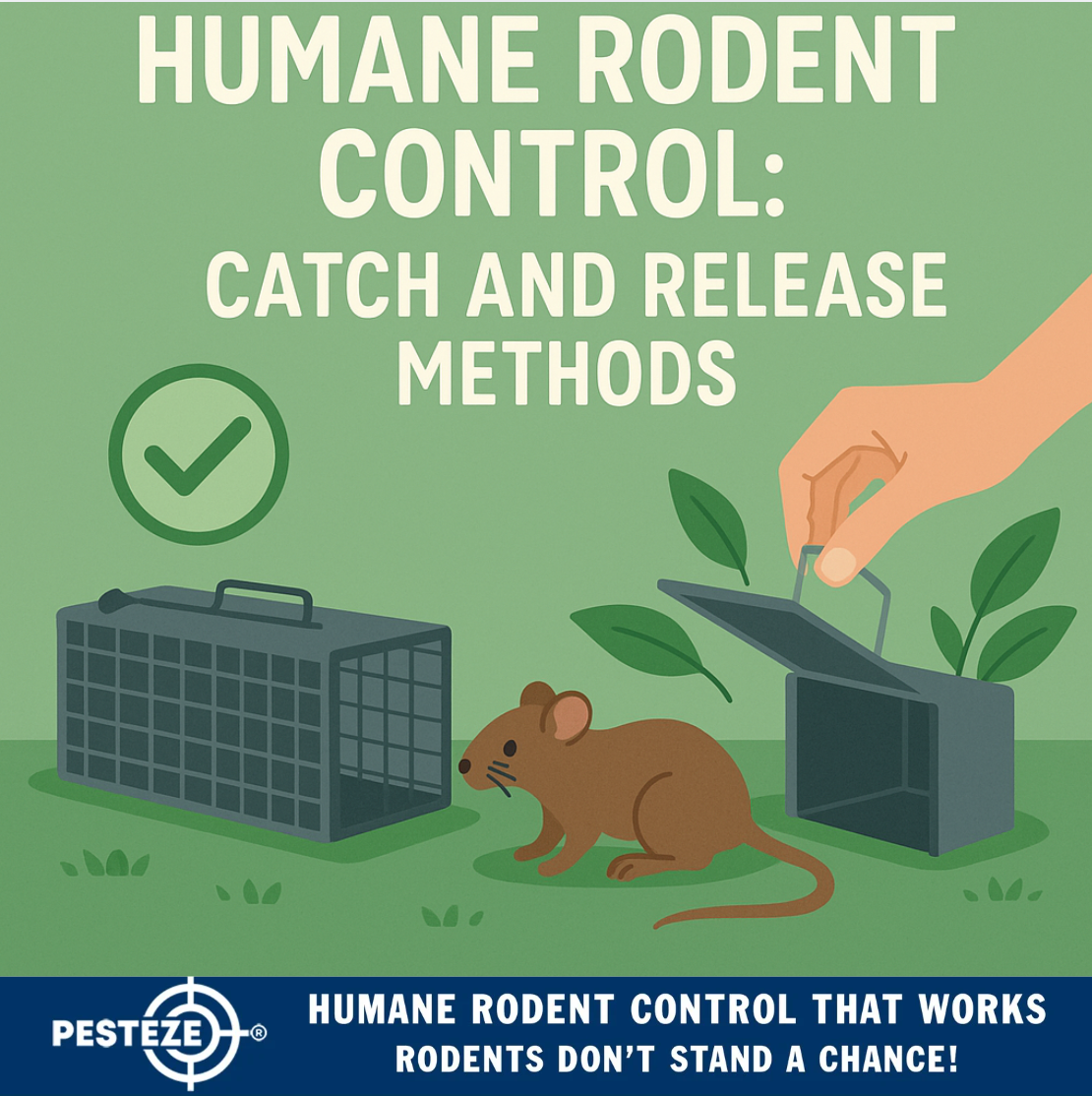HUMANE RODENT CONTROL: CATCH AND RELEASE METHODS

HUMANE RODENT CONTROL: CATCH AND RELEASE METHODS
SUMMARY
Humane rodent control allows you to remove pests without causing harm. This guide explores safe, effective catch and release methods that protect both your home and the well-being of rodents.
FEATURES
-
Live Traps: Use reusable, no-kill cages to capture rodents.
-
Proper Placement: Position traps along walls and entry points.
-
Safe Handling: Wear gloves to avoid contamination and stress.
-
Release Guidelines: Relocate rodents far from homes and food sources.
-
Sanitation Practices: Clean areas after removal to prevent return.
-
Ethical Solutions: Control rodents without poisons or harsh methods.
DESCRIPTION
For homeowners who want to protect their property while avoiding harm to animals, humane rodent control offers the perfect balance. Catch and release methods are designed to remove rodents without killing them, making them a compassionate alternative to traditional traps or poisons. These practices ensure rodents are dealt with responsibly while maintaining a safe, pest-free home.
The foundation of humane control is using live traps. These no-kill cages are designed to capture rodents without injuring them. Available in various sizes, they can accommodate mice, rats, and even squirrels. When setting traps, bait them with food such as peanut butter, seeds, or oats to increase effectiveness.
Proper trap placement is critical. Rodents typically travel along walls and near entry points, so placing traps in these areas increases the likelihood of capture. Avoid placing traps in the middle of open rooms, as rodents prefer moving close to edges and hidden spaces.
Safe handling of traps is essential for both your protection and the animal’s well-being. Always wear gloves when handling traps to reduce the risk of disease and prevent leaving human scent, which can deter rodents. Once a rodent is caught, check traps frequently to ensure the animal is not left inside for too long.
When releasing rodents, follow proper relocation guidelines. Move the animal at least one to two miles away from your home in a wooded or natural area far from human dwellings. This minimizes the chance of the rodent returning while providing it with a suitable environment to survive.
Sanitation after removal is another crucial step. Clean and disinfect areas where rodents were active, as their scent trails can attract others. Eliminating these traces helps ensure that new rodents do not follow the same paths back into your home.
Humane rodent control is an ethical, environmentally conscious way to handle infestations. By using live traps, practicing safe handling, and responsibly relocating rodents, you can solve rodent issues without resorting to harmful poisons or lethal methods. This approach promotes compassion while maintaining a healthy, rodent-free living space.
- Saharsh Bansal


Comments 0